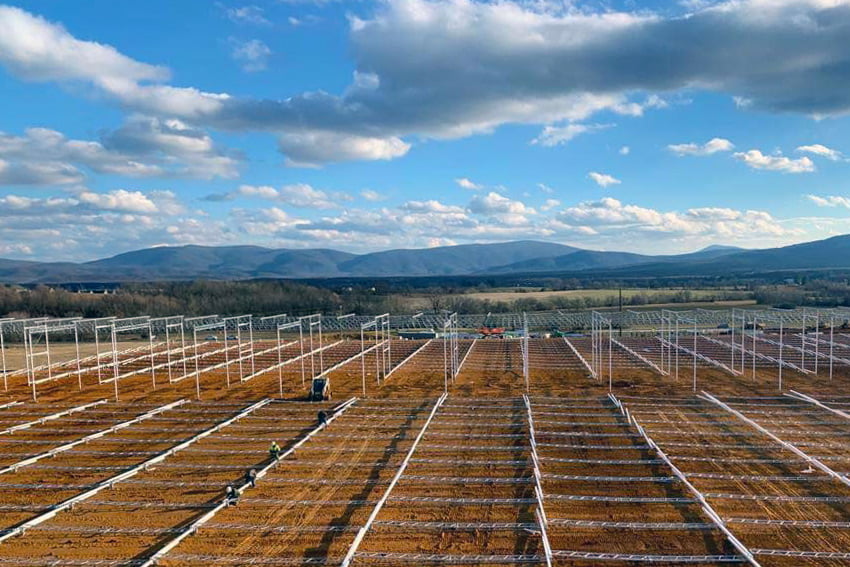

Designing a commercial greenhouse isn’t as simple as you might think. From planning to choosing an environment, system, floor plan, facilities, and more, you need to have a carefully constructed design that can be executed according to your needs and preferences. That’s why it’s crucial to hire a professional team to work with you every step of the way.
At Ruthven Greenhouse Construction, our specialists will prioritize your project to ensure your expectations are exceeded, your design is flawless, your plants will thrive, and more. From standard to completely personalized commercial greenhouses, our experience and skill will play a crucial role in your project.
While many people tend to overlook the planning phase, this is one of the most, if not the most, crucial stages of designing your greenhouse. Your design plan will consider every component of your greenhouse, from location to light transmission, water supply, ventilation equipment, and much more.

A project of this magnitude requires carefully thought-out decisions. Therefore, you can’t afford to make major structural decisions right before construction starts. This is where a plan comes in handy.
Before your greenhouse operations can begin, you need to carefully consider and design your plan around the following factors:
Finding the ideal location is pivotal as it caters to the greenhouse as well as the surrounding areas, such as room for expansion, storage, parking lots, etc. The location also needs to have the ideal soil for your greenhouse to thrive. Sunlight is also key. You want to ensure the location is exposed to sufficient sunlight to allow for plant growth. If your greenhouse is for commercial purposes, you also want to ensure it’s easily accessible, meaning it’s close to major highways and roads.

When choosing a location and designing free-standing greenhouses, it’s also vital to consider the necessary utilities. The main energy source of a greenhouse is the sun; however, careful consideration still needs to be given to water and electrical power. At times, it may also be necessary to test the surrounding water for contaminants, such as chemicals, sediments, and pH measurements.
Three of the most well-known greenhouse plans people tend to opt for include:
Plant growers tend to choose retractable-roof greenhouse frames as the roof can open, allowing the plants to benefit from natural light and rain.
This is one of the most common greenhouse structures. It consists of an even-pitched roof and a single-room frame.
These are not as common as the other two options; however, they are quite similar to even-span greenhouses. The main difference is that uneven-span greenhouses have uneven pitches, and the widths tend to differ. These options are most commonly constructed on hillsides.
If you’re designing a commercial greenhouse, you need to give consideration to factors such as greenhouse tables, benches, shelving racks, and flooring:
These are a popular option for commercial greenhouses as it’s easier to display your plants and presents the opportunity for a simple floor plan.
If you’re looking for a wide and long surface area with plenty of space from the ground, you should certainly consider adding tables to your greenhouse design.
Benches are another versatile option that will enable you to switch up your floor plan and flow regularly. These are also fantastic if you need to maximize space in your greenhouse. Benches are also ideal for plug growing, research applications, standard plant cultivation, etc.
If you have extensive greenhouse operations, shelving racks are the ideal way to display your plants and make the most out of your space. With shelving racks, you can achieve floor-to-ceiling plant storage.
Choosing the best flooring option for your commercial greenhouse structure can be a challenge since there are endless options on the market. However, many commercial greenhouse owners tend to opt for:
When constructing a greenhouse, it’s likely that you will need a number of other facilities to keep your operations flowing smoothly, such as:
Headhouses are extremely versatile as they can be used for a wide range of purposes. Essentially, these facilities can be used for anything that the greenhouse is not needed for. Many people tend to use headhouses for potting areas, equipment storage, and office spaces.
A headhouse can also be similar to a greenhouse structure in that it can allow for light transmission. However, this doesn’t have to be the case as there are other times when they are designed like warehouses or garages.
These are designed in a similar fashion to greenhouses, except they are covered with a shade cloth. A shadehouse is essential to ensure your plants are protected from excessive heat and direct sunlight.
A team of professionals can help you achieve the following when it comes to designing your commercial greenhouse:
As you can see, designing a commercial greenhouse has more complexities than one would initially think.

However, with the expert team from Ruthven Greenhouse Construction on your side, you’ll be able to design the ideal greenhouse that has the right foundation, light levels, utilities, and more.